N.B. – This is the review that nearly killed The Warden’s Walk. Thinking about the movie, even over a year after I saw it, depresses me. It’s torn me up, trying to evaluate it. Are a few flecks of brilliance enough to make a dull rock valuable? I hope so, but I wonder. Yet The Hobbit Part 1 is too big a movie for me to ignore, and so I felt that I shouldn’t focus my energies on other reviews until this one was finished. Considering how long it has delayed the rest of my blog’s activities, this may have been a mistake. Yet here it is, my review at last, arriving after The Desolation of Smaug has been released (and as it remains unseen by me, hopefully not for long).
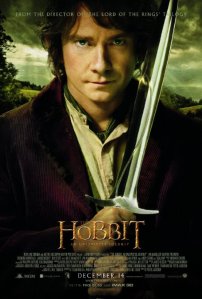 Title: The Hobbit: An Unexpected Journey (2012)
Title: The Hobbit: An Unexpected Journey (2012)
Director: Peter Jackson
Starring: Martin Freeman, Ian McKellan, Richard Armitage, WETA Digital, the Seventh Doctor, assorted characters actors, several elves, ten dwarves and one stunted GQ model masquerading as a dwarf
Score Composer: Howard Shore
Length: 169 minutes (two hours and 49 minutes!)
Rating: PG-13 for frequent combat, mostly bloodless, but involving heads and limbs hacked off
Opinion summary: The Hobbit: An Unexpected Journey was my most looked-forward-to movie of 2012, but it is the least out of the eight movies I saw in theater that year. As an adaptation of Tolkien it is disappointing, and as mere entertainment it is adequate, but unbalanced. For every fun moment there are two dull ones, for every salvo of awesome inspiration there are three that misfire, or even aim at lower standards. The movie as a whole left me feeling empty and a bit hurt inside.
*Spoilers!*
An Unexpected Frame Rate (or 48fps 3D versus 24fps 2D)
Let’s get this out of the way first. A higher frame rate nearly eliminates motion blur in action sequences (finally making them watchable in 3D) and greatly reduces eye strain for the 3D in general. This is good. However, in all other matters it pretty much ruined my first viewing of the film. It distracted me from the movie itself, exposed the copious CGI as even more fake than usual, caused me to feel more distant and removed from the world of the movie, and captured so much detail of movement that the subtler scenes ended up looking almost jittery and slightly sped-up (a phenomenon reported by other reviewers as well). It made me tense just watching it. There’s such a hyper quality, like the screen was shouting at me constantly, that it was hard for me to focus on the visuals themselves and the wonders of the art design and sets. Some people have liked it or not minded it, so perhaps it doesn’t bother you, but I greatly regret seeing the movie that way. It satisfied my curiosity, but nothing else.
My second viewing, in normal 2D 24 fps was like a breath of fresh air – finally, it looked like a real movie with some class and elegance to it! I know Peter Jackson believes higher frame rates are the future of cinema, just as sound and color were early in the 20th century, but the difference is that sound and color can actually add meaning to a film and allow the telling of different types of stories, while I can’t yet see how a higher frame rate could do these things. Harping on a vague word like “immersion” doesn’t mean a thing, especially when the actual product rudely kicks viewers out of the story.
The 3D itself is competent and doesn’t usually detract from the picture, but neither does it add anything. It doesn’t look as well-integrated and thought-out as the 3D in such movies as Hugo and Life of Pi. Those movies proved that 3D doesn’t need to always be a gimmick, but can be a legitimate artistic tool for the director. But Jackson simply doesn’t have the artistry of Scorsese or Ang Lee, and in The Hobbit the 3D is sadly just a gimmick, and not a very interesting one.
Roast Expectations
That actually is pretty close to my feelings about the movie as a whole: too much gimmickry, and none very interesting. Oh, don’t get me wrong, there’s stuff I love in the movie. But these tend to be isolated or background bits: seeing the Shire again, glimpses of Dwarven might and Wood Elven glory, the singing, walking with Gandalf the Grey again, etcetera. But too much is stilted, or flat, or bloated, or pandering, or self-indulgent, or just plain mediocre. I walked into the theater with a excited grin on my face and left trying to maintain a smile but feeling very “meh” about the whole thing. There’s a whole lot of lesser Peter Jackson on display, and—despite the extensive mining of The Return of the King‘s Appendices—simply not much Tolkien.
A Short Shrift
From my fan’s perspective, there are three scenes which it was imperative that Jackson nail for a successful adaptation: Bilbo’s good morning with Gandalf, the trolls, and Riddles in the Dark. Granting that I am neither screenwriter nor filmmaker, I think these scenes should have translated pretty smoothly from book to screen: Tolkien gives them all tight, interesting dialogue, and the latter two have satisfying pay-offs preceded by well-paced dramatic action that develops character. Let’s look at the film’s versions.
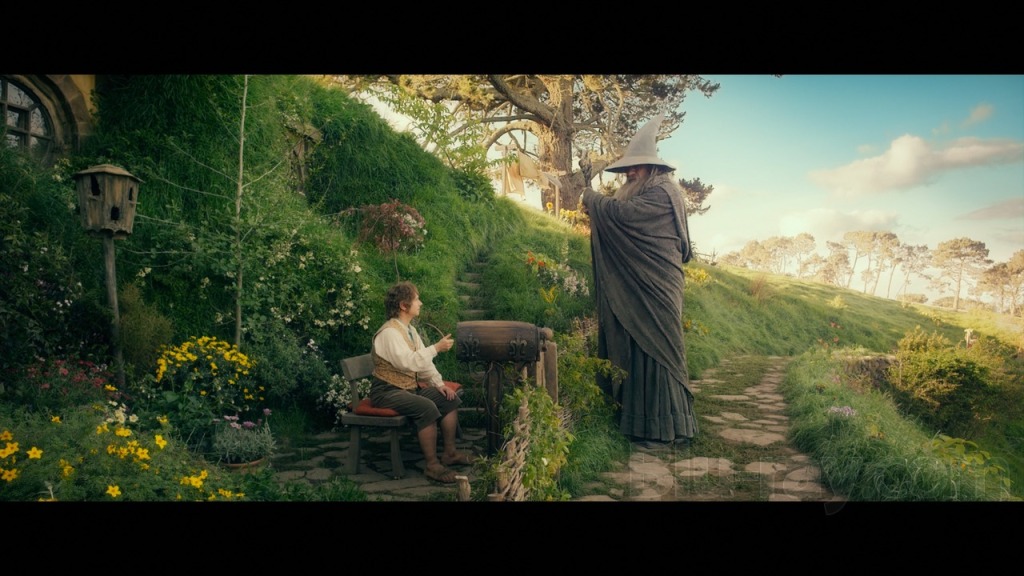
In the “good morning” scene the timing just feels off. I can’t quite place my finger on it, but it never sat well with me on either of my three viewings. It lacks spark, feeling more like a recitation than like the characters are actually reacting to each other. Now, this scene is supposed to show Bilbo so comfortably, happily at ease in his own challenge-free world that he doesn’t remotely believe that Gandalf will actually bring adventure to his doorstep. In the book, Bilbo seems to really believe that his cheery “No thank you, we don’t want any adventures here!” is all that is needed to stop adventure from coming. Yet Martin Freeman plays Bilbo frightened and jittery from the outset, wide-eyed and puffing on his pipe as a toddler clings to his blankie for comfort. Point is, I think that before the dwarves’ arrival Bilbo is supposed to be confident and calm in his untroubled little world—isn’t that the whole point of Bag End and the Shire? The movie’s first scene with Martin Freeman portrays a hobbit already ill-at-ease with his life, but in denial about it. It may not be the greatest departure from Tolkien or anything, but it makes this whole scene feel a bit off, and far from the iconic moment I feel I had a right to expect.

Now the trolls. I’ve noticed many other reviewers single this one out for criticism as well. Most of them mention the troll snot as being the worst offender, but I think that is a minor offense compared to what follows. Jackson turns an episode which is all about sneakiness and creative thinking into a bloated fight that sucks all the charm and cleverness from Tolkien’s passage. It also ends up indicating some rather big tonal shifts for the characters and the story as a whole.
Now, I understand Jackson’s desire to make the dwarves tougher and more warlike than the comic, petty, unprepared rabble of the book – after all, it’s hard to stuff in random combat scenes (and sell action figures) when most of your characters lack combat experience and weapons. But doing so completely upends the purposeful way Tolkien portrayed them. Now it is even less acceptable for them to have no plan for dealing with the dragon, or to be so afraid as to send Bilbo to investigate the trolls first. It is played for laughs when Fili and Kili cheekily push Bilbo towards the trolls and hide themselves among the bushes at a safe distance, but it seems out of character for such bold, war-trained young men armed to the teeth. Not to mention a bit cowardly.
But okay, they’re immature and just think they’re having fun. The scene continues fine for a bit, as Bilbo sneaks about and narrowly evades being seen by the arguing brutes. Then he’s caught, and we get a scene of juvenile gross-out humor with the troll snot. The fight that ensues when all the dwarves charge out of the trees to save Bilbo has some fun bits on its own, but is gratuitously long and simply doesn’t belong. Though clearly intended to make the scene more exciting, I found it quite boring. The music and camera movements build it up as a soaring moment of heroism and grandeur, but in reality it’s just pointless. The dwarves should have won that skirmish with ease, and indeed are shown to be in the process of doing just that, but in our hearts we know that they must be contrived to lose. And contrived it is, with Bilbo suddenly being held hostage.
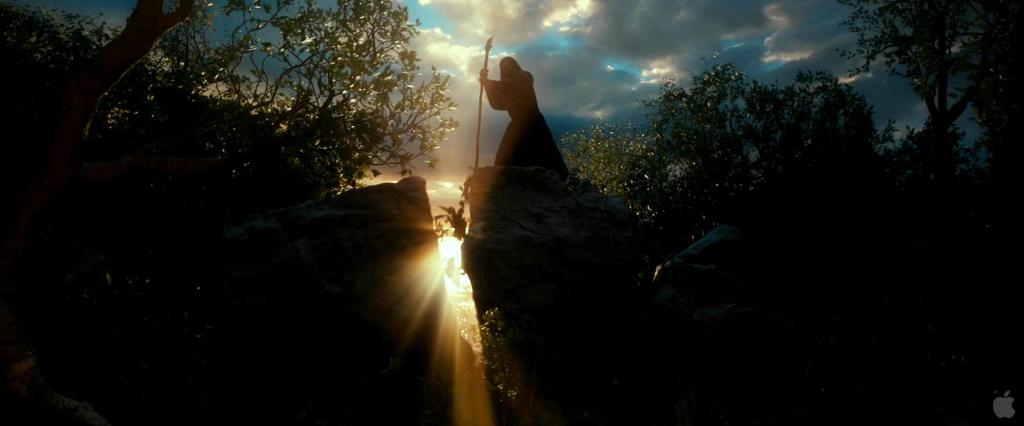
The worst departure, perhaps in the entire movie, is the ending of this scene: Bilbo desperately stalls (without much focus or cleverness, and only a little success) until Gandalf jumps up and magically breaks a rock so the dawn sun shines through and turn the trolls to stone. While Gandalf does admonish Thorin by saying that Bilbo had the nerve to stall, the part that cleverness plays in this scene is distinctly inferior to that of the raw power of magic; Bilbo only stalls for about a minute or so. Rather than solving the dilemma by outwitting their enemies, the encounter becomes another action scene solved by violence from the power inherent in one of the characters. Compare to the book, where Gandalf hides in the woods and throws his voice around, fooling the trolls into fighting with each other until the sun rises on its own. So much more clever, charming, and poetic. This is not one of those scenes which wouldn’t work in a movie as written and had to be changed. It’s a literary scene, sure, but it would have worked so well in the movie, had Peter Jackson only trusted his source material.
Now, it’s not all bad – the trolls themselves look great and sound the way Tolkien wrote them. I feared that they would lose their working-class accents and humorous, petty bickering, but nope, that’s all as it should be. I’m glad Jackson resisted the urge to reduce them to growling, snarling beasts. Some of the scene’s original comedy is intact, and there’s fun to be had. My nephews (7 and 9) enjoyed it. But for me, the pace of the scene was tiresome and the departures from the spirit of the book too depressing.
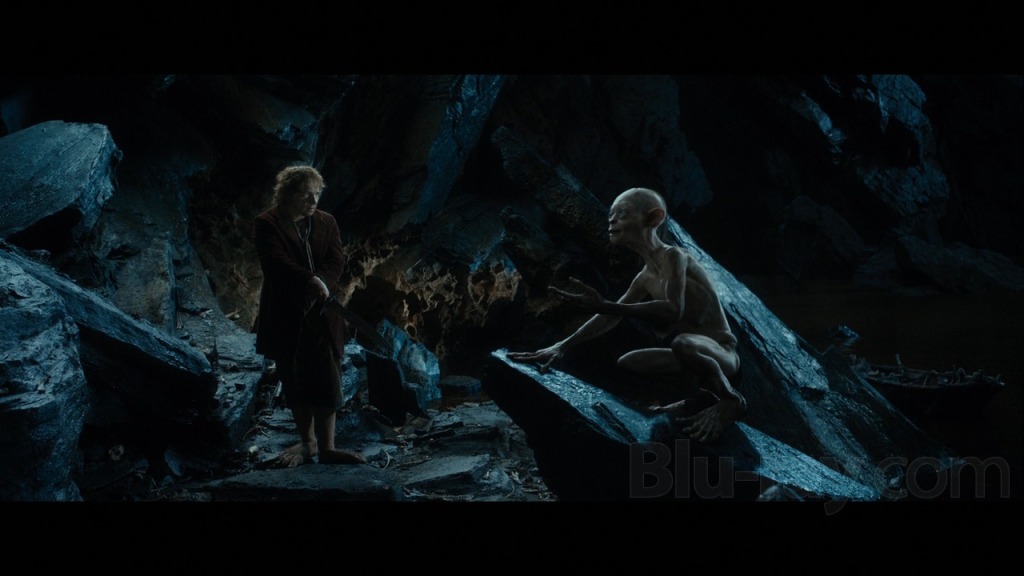 Now, the riddle scene is really pretty good. Upon reflection, it is probably the strongest part of the film, staying more to the point and pairing the two most complex and entertaining characters in all of Jackson’s movies against each other. I am generally happy with it.
Now, the riddle scene is really pretty good. Upon reflection, it is probably the strongest part of the film, staying more to the point and pairing the two most complex and entertaining characters in all of Jackson’s movies against each other. I am generally happy with it.
And yet, and yet…that ending! Gah! Did they have to bungle the ending of the riddle scene? For the final riddle Gollum asks, Bilbo is supposed to answer accidentally by trying to ask for more time (“…time, time!” was all he could squeak out). In the movie, though, it is Gollum who says “Time’s up!” and stupidly gives away the answer with a modern cliché. This may seem like a minor thing, but it makes Gollum more stupid and less cunning. Gollum is a very clever creature and unlikely to make such a mistake. It also feels less Providential an escape for Bilbo, as it relies more on Gollum accidentally or subconsciously giving him the answer rather than on his own fear coming to his aid. Now, one may argue that Providence was still needed to cause Gollum to slip up in the first place. I can see that. But I don’t see how this change is at all an improvement on the original or in any good way meaningful.
So, in summary of these three vital scenes, they didn’t do their jobs. They didn’t make me feel that the best parts of the book were being appropriately and entertainingly realized on the screen. And this is, ultimately, the heart of why the entire film didn’t end up working for me.
Over-Long and Underfocused
It seems I’m still really angry at the story being dragged out through three massive movies, and the resultant reshaping of a lovely, relatively gentle quest into a grim war epic. It’s annoying, it’s unnecessary, it’s exhausting, it’s downright immature.
Yet my biggest beef with The Hobbit is that I just don’t think it’s a very good movie on its own merits. It’s boring. I repeat, The Hobbit: An Unexpected Journey bored me. As in, after about two hours I started to doze and only barely remained awake through sheer force of will. See, whatever anyone says about the various and sometimes-egregious changes that the Lord of the Rings movies made to the books, they were nothing less than genuinely thrilling adventures. But here there are too many deviations from the main plot, too many unneeded and stupidly-long action scenes, and too many scenes that are written awkwardly and forced into a story they don’t belong in.
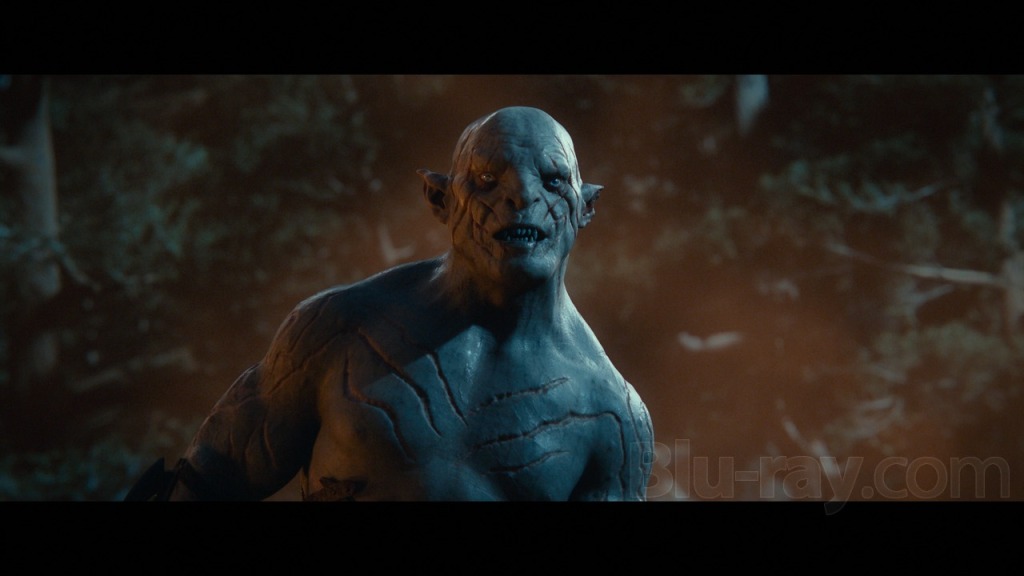
Queer Logic
There are also some queer laps in logic, such as when Radagast promises to lead the orcs away from the company as a diversion, and then proceeds to lead them along the company’s very escape path. That’s just boneheaded writing, refusing to do what makes sense in favor of an action scene.
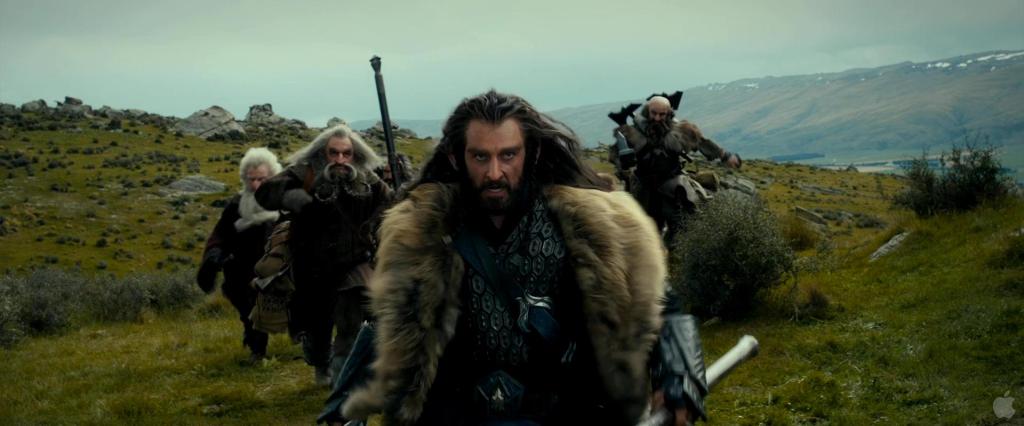
I’m also a bit confused with Jackson’s treatment of elven politics. For those of you not familiar with the lore of Middle-earth, the elves under Elrond in Rivendell and those under Thranduil in Mirkwood are very different culturally and politically. Elrond and most of his direct subjects are Noldor, who in previous ages had lived among the angelic Valar and founded most of the great elven kingdoms. Thranduil and his people are Sindar, those who never learned the wisdom of the Valar and are generally considered lesser than the Noldor in their achievements and virtues. Thranduil is also understood to be an extremely stubborn, willful king, modeling himself after Thingol of Doriath, who had a bad habit of trying to force his will on everyone else, even on Noldorin elves whom he should have respected.
With these facts in mind, there are two parts of the film that really confused me. The first is the prologue, where Thranduil is shown paying homage to the Dwarven King Under the Mountain. I nearly shouted in the theater. Arrogant, independent Thranduil, who consciously models himself after the one elf that dwarves hate the most, is willingly swearing fealty to a dwarf? Elves generally look down on dwarves in Tolkien’s mythology, especially Thingol and Thranduil. The movie’s situation is unthinkable! The second moment that confused me is Thorin’s rude remarks to Elrond in Rivendell, where he seemingly equates Elrond and his people with Thranduil and the Greenwood Elves. Not even angry dwarves would be that ignorant! Again, this is just lazy writing that tries to insert or increase tension where it doesn’t belong.
Other (and as Subjective As Ever) Thoughts
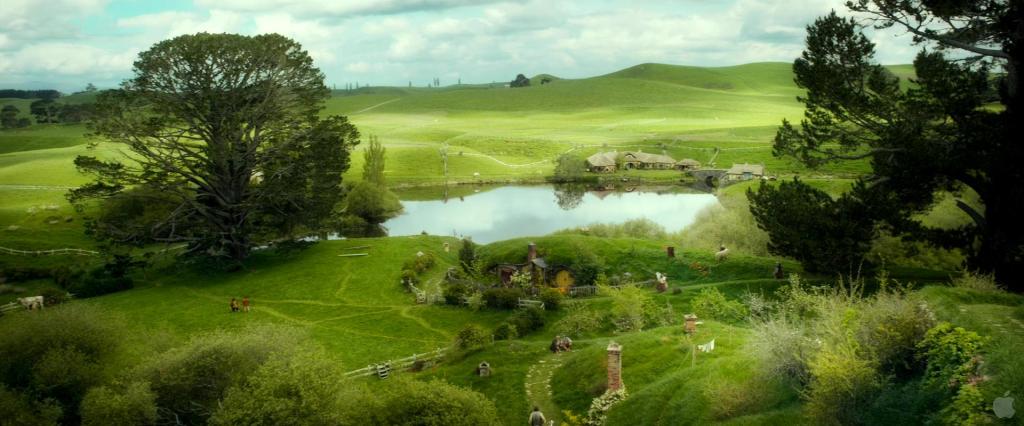
While I said above how great is the work of the art and set design folk at WETA, I have one major beef with the look of The Hobbit (beyond the frame rate and 3D!). So much looks like it was filmed in soft focus, with a bright shiny gloss reminiscent of Pantene shampoo commercials and Gaussian girls. Perhaps this was intended to give the film a more fairy-tale aspect than its predecessors, and so to distinguish it more, but if so that was a poor choice. Part of what made us believe in Middle-Earth was that it looked real, not all glossy and fake. You could see the dirt and the lines on faces, and the places looked lived in and tangible. Only the elven realms of the Lord of the Rings films were glossy, and even then not to this extent. But this movie looks like a video game. Even the real sets look CG because of this effect. And the CG looks like poor CG, even if the technology behind it is undeniably more sophisticated than what WETA had a decade ago. (At first I thought this was the fault of the high frame rate, but the weakness of the illusion persisted in my 24fps screening.) That white orc chasing Thorin looks like an early design from the God of War game series, and the wargs (while better designed than LOTR’s wargs) never look to be on quite the same plane of reality as the flesh-and-blood actors. It undercuts the verisimilitude of the entire world. Some people say that for whatever The Hobbit’s flaws, we should just be grateful for returning to this world on the silver screen. Honestly, I didn’t feel like I was returning to the same world, but rather to a next-gen video game approximation of Middle-Earth. I almost would rather have not returned at all.
I have just recently re-watched The Fellowship of the Ring and The Two Towers, and I marvel again at how fun and impressive they are. It has been probably four or five years at least since I had sat down to watch them, and I saw them with fresh eyes. And you know what? They still hold up extremely well. Sure, they have their own pacing issues and questionable choices, and unfortunate deviations from Tolkien. But they remain good films, and tended to keep the heart of Tolkien’s story. I also reread the books in 2013 and find this still to be true.
In the first film trilogy there was a sense that the filmmakers were honestly telling the story in the best way they could, and that even their mistakes in adaptation still came from their desire to serve the story. But here, it feels like Peter Jackson is trying to ignore the actual journey to the Lonely Mountain as much as possible. He no longer approaches the story with the humility of someone adapting a great story into another medium, but as a conqueror who has stolen a kingdom and is rebuilding it in his own image.
Jewels in the Dark
Before I wrap up, let me turn our minds to more positive thoughts. There were several things I really did enjoy.
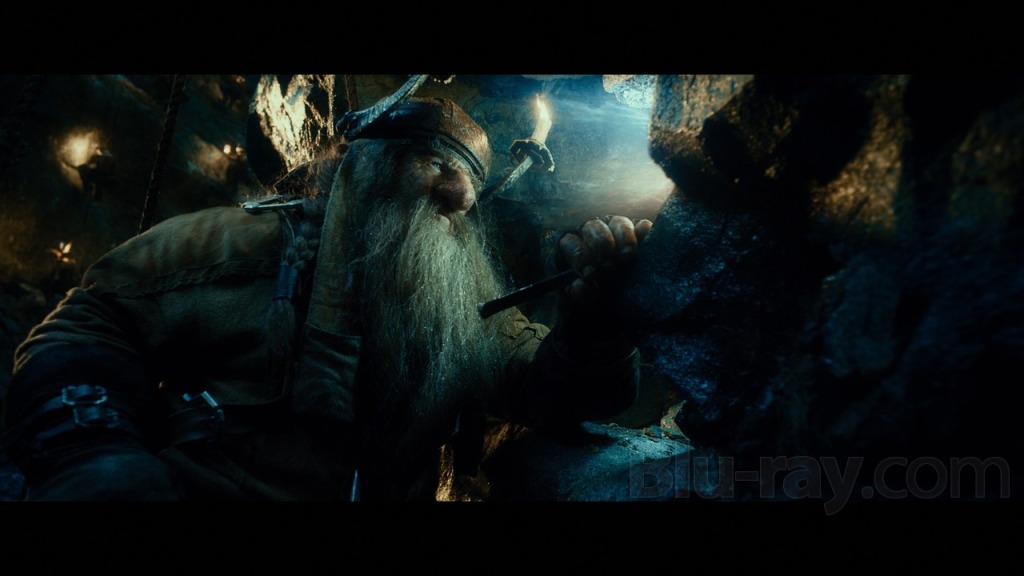
The Art and Set Design people at WETA totally outdid themselves. The dwarven cities of Erebor and Moria in particular are exactly how I hoped they would look; grand and expansive, bursting with craftsmanship and the dwarven love of mineral beauty. The human city of Dale looked gorgeous and more full of life than the cities in Jackson’s original trilogy. In Rivendell we were finally given a sense of how big the place is and where rooms are in relation to each other. That stuff is immersive.
Those prologue scenes of Dwarf armies fighting were excitingly well-realized, especially since I don’t know of any movie that’s really dealt with dwarven societies to this extent and detail. We’ve seen humans and elves fight onscreen, but never so many dwarves, and it was great to see all those stubborn little powerhouses hammering through hordes of orcs under vast mountain halls.
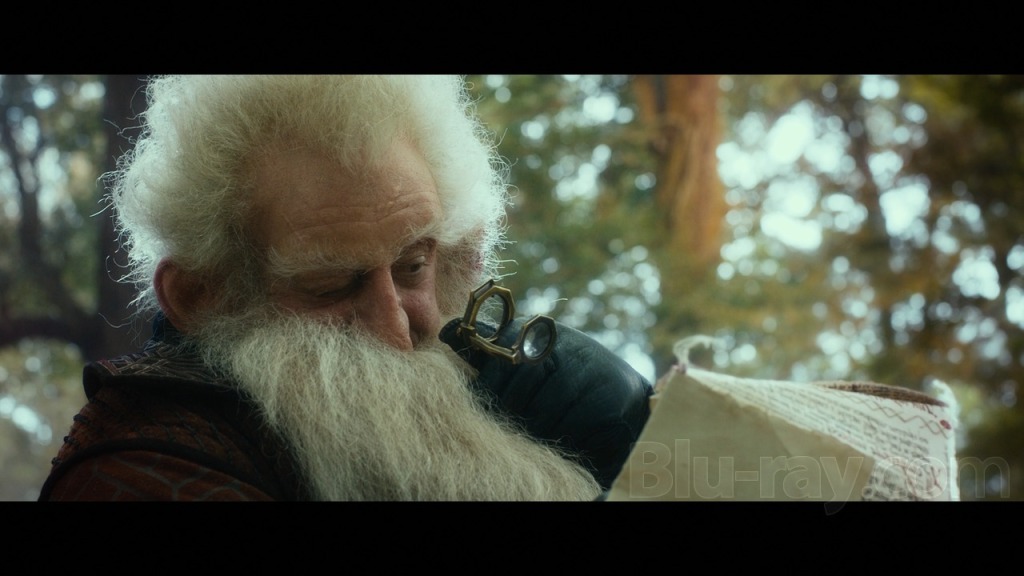
Likewise, I loved the designs for each individual dwarf in the Company, barring Kili, who is just too much “GQ magazine cover” and doesn’t seem to display many dwarven qualities. The others all are very dwarven and still very distinct. Balin in particular is absolutely perfect, in look and character, to the wise, kind-hearted friend of Bilbo’s in the book. Their designs and personalities hint at the depth and variety of dwarven culture in a way that we could never get from the portrayal of Gimli in Jackson’s original trilogy, which traded too much on basic clichés and height-related humor, especially in the The Two Towers. I’d also like to give a nice mention to the character they created for Bofur, especially his little moment with Bilbo in the Misty Mountain cave when he confronts the hobbit trying to leave in the middle of the night. I may not care much for Peter Jackson decided Bilbo would try to give up, but I liked how Bofur gave him some encouragement while honoring his decision to go back (however short-lived). That’s the sort of character expansion I was hoping the movie would engage in, as it fills out Tolkien’s story within the framework of the book.
The “Over the Misty Mountains” song and accompanying scene. Perhaps the most “Tolkien” moment in the whole movie, it rang very true and thrilling.
The plate-breaking song! I wouldn’t have complained if Jackson had left it out, but it is a nice nod to Tolkien’s love of silly verse and I enjoyed that whole scene. In fact, I find I’m generally a fan of any singing in these Middle-Earth movies.
Howard Shore’s score, natch.
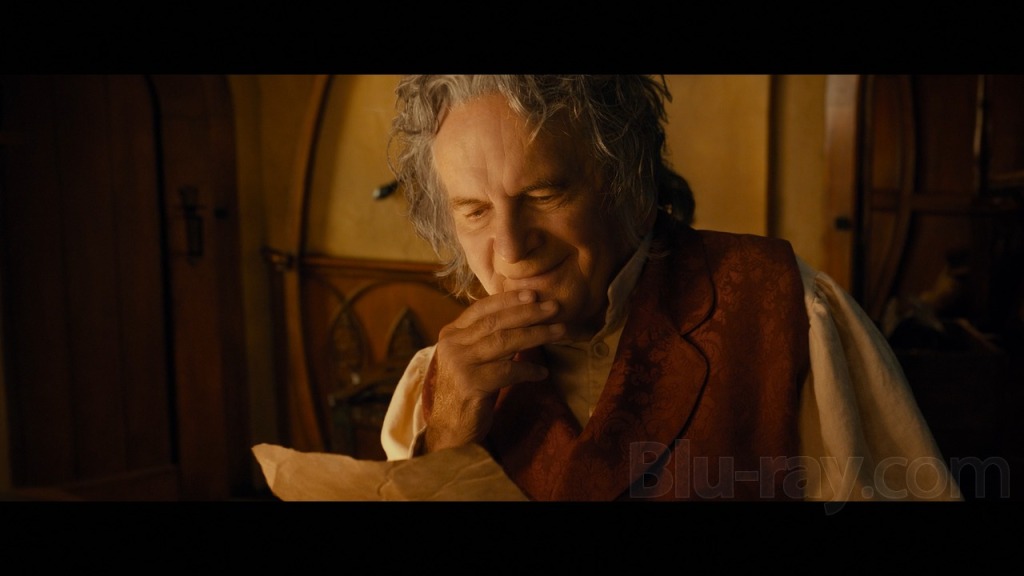
Martin Freeman as Bilbo is excellent. Not a perfect Bilbo, as some have said (that distinction goes to Ian Holm). If I may be allowed a critical observation, I believe he plays the role too jittery and neurotic, especially in his very first scene (more on that later). But on the whole he is very hobbitish, and brings out some of the nuance and unexpected cleverness of Bilbo. He’s very likable, and is easily the most interesting character in the movie. This fits well with the book, in which Bilbo is also the most layered and entertaining character (and reminds me that movie-Frodo is rather boring in comparison).
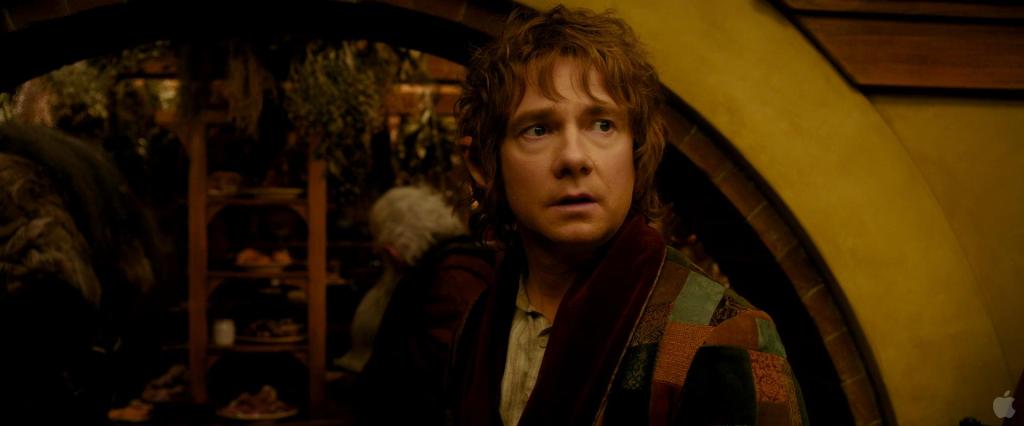
The eagles look amazing. They’re one deus ex machina I haven’t yet tired of. Of course, Jackson doesn’t let them speak, as in the book, but that’s a sacrifice I can live with. It helps that I have a very soft spot for flying scenes in any story.
The Rivendell Elves and Elrond do seem a tad more down-to-earth than they appear in Jackson’s LOTR trilogy, and I’m grateful for that. Elrond actually speaks at a normal pace, rides a horse, wears armor, and generally acts like he’s alive (which makes him even cooler than before). Galadriel, it must be said, seems more physically inert than ever, but she’s so radiantly gorgeous and communicates so much through her eyes (thank God for perfect casting and Cate Blanchett!) that I find it hard to mind.
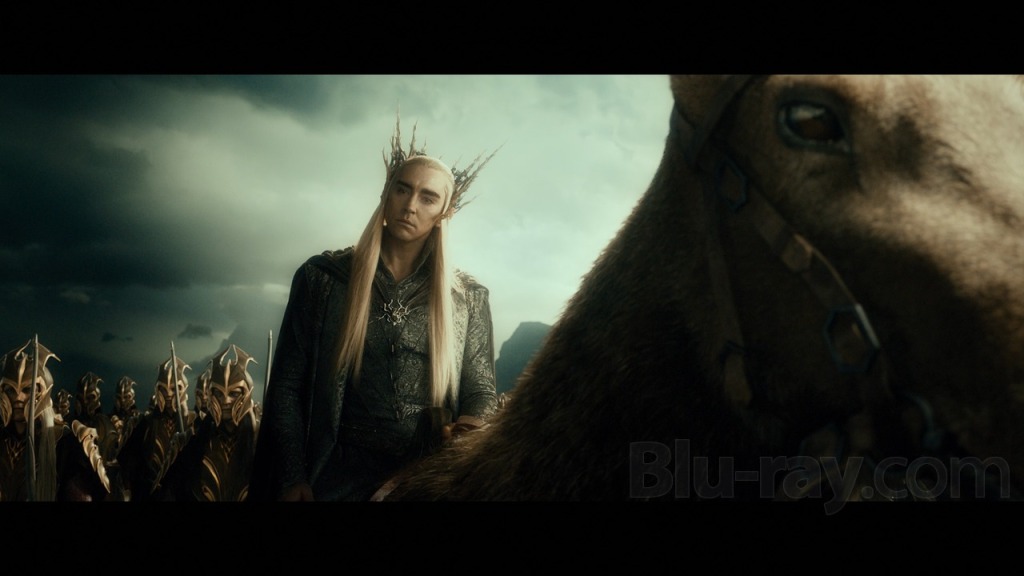
Speaking of the Elves, that brief glimpse we got of Thranduil was also encouraging. It doesn’t answer the question of whether Jackson will allow the wood elves to be wilder and more Fey-like than those in Rivendell and Lothlorien, but they sure do look awesome. Lee Pace will, I think, prove to be a great choice as the wood elf king, if he’s allowed to do some real acting. That look he gave the fleeing dwarves was aloof, but not quite cold. Plus, he rides a massive stag. That’s like a +15 to Awesome.
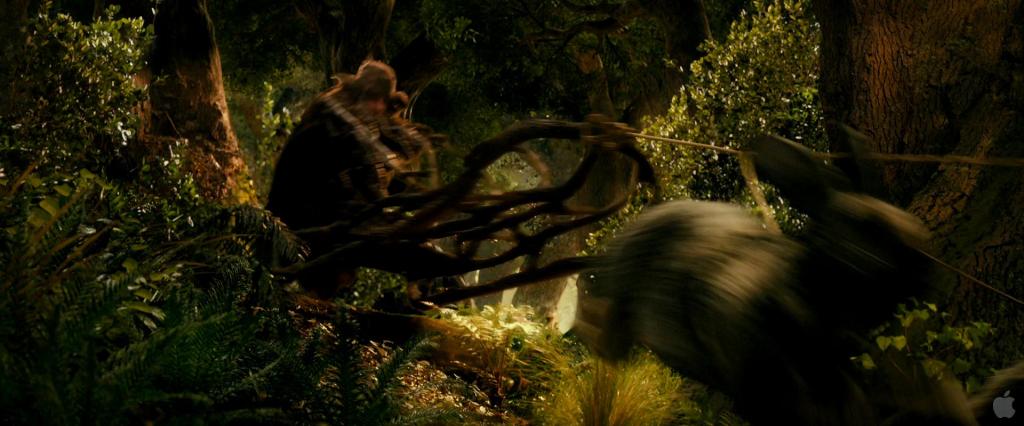
Radagast! Granted, he wasn’t exactly vital to the plot, but I thought he was a lot of fun and pretty cool in his own way. Outrunning wargs on a rabbit-led sled must count for something, right? He played out as I had imagined him from the books. I also like that his scenes in Mirkwood, while not quite plot-vital, nonetheless showed his close connection to the natural world and how the creeping influence of the Necromancer damages that world. I didn’t even mind the movie taking a bit of extra time to showcase his desperate fight for the life of a little hedgehog. In a way, it reflects Tolkien’s own focus on the small, the little things, and their importance in God’s view of the world. Now, if only they could do something about his hair, and then integrate him into the story without forcing all sorts of illogicalities and tiresome digressions…
And lastly for this ragtag list, Neil Finn’s rendition of the Misty Mountain song that plays over the credits. His voice doesn’t sound quite like I expect a dwarf’s to sound, but the song is deep and rousing and one of the best the series has offered us. Well done, Neil.
Conclusion
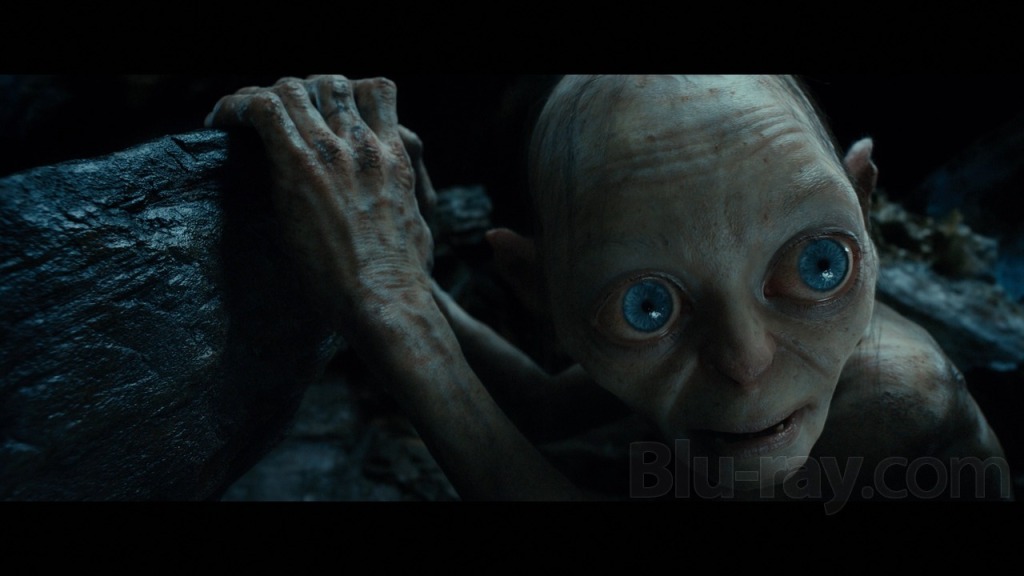
Were my expectations too high? After all, we did read and discuss the book in detail, and I do tend to be fairly purist when it comes to adaptations of books I love. But I already knew some of the deviations ahead of time, courtesy of Jackson’s excellent production videos, and am familiar enough with what he did in the original trilogy. I’ve seen how Jackson approaches epics and reasonably expected that, as before, his strengths would overcome his weaknesses. I am sorry to report that they did not.
I haven’t yet seen The Desolation of Smaug, although I hope to within the next week. Reports have been mixed from my Tolkien-loving friends, with some enjoying it much more than An Unexpected Journey and others much less. My hope is that by now I will finally be able to view it as its own film and “forget,” as it were, that it is intended to be an adaptation. I’ve liked what I’ve seen of the Wood Elves and Smaug thus far. So I haven’t lost hope for this series completely, even if my patience has been severely tried. After all, what’s worse than a poor film is a long poor film.
Near the end of An Unexpected Journey, Bilbo says something to the effect of “I believe the worst is behind us now.” I hope so, Mr. Baggins, I hope so.
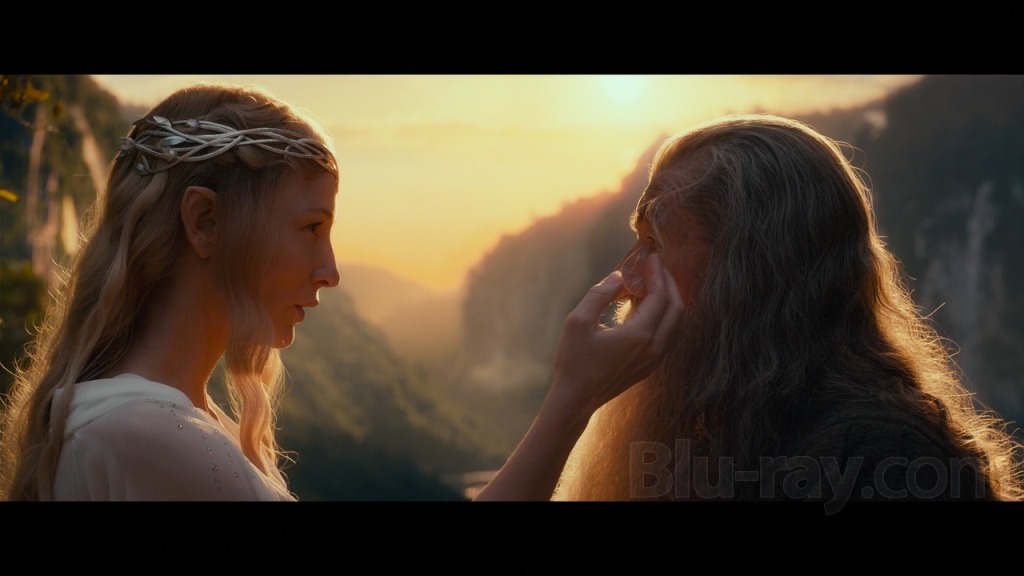
Post-Review Note: Despite the long gestation period for this review, most of it was written within the first few months of 2013 and I’ve chosen to let the text reflect the strength of my emotional reaction at the time. As time has passed and I’ve seen the film again on Blu-Ray and TV, the pain of disappointment has subsided due to familiarity. I’m willing and even eager to hear from fans who think An Unexpected Journey isn’t an artistic failure; heck, even Dr. Corey Olsen, The lauded Tolkien Professor, defends the films with some rather impressive arguments. (I actually haven’t read that article yet, as it has spoilers for The Desolation of Smaug, but I’ve listened to literally hours of him and his cohorts talking about the films on his excellent eponymous podcast.) I remain disappointed in Peter Jackson’s vision for The Hobbit, but discussion of it remains fascinating.
